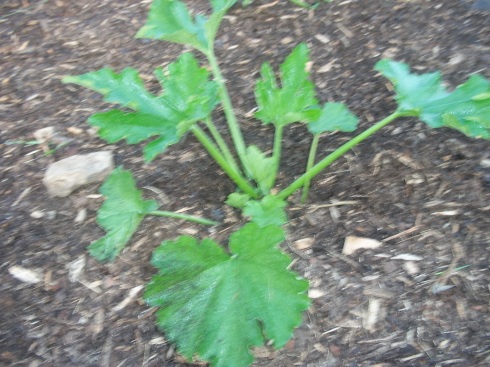I’ve resigned myself to the fact that whatever I do in my garden this year is primarily in preparation for next year.
In my post earlier this month, I discussed the thick tangle of weeds that I attempted to till through this spring when I started my new garden. A couple of my Facebook friends recommended white vinegar as an organic weed-killer, but I ultimately rejected that idea because I didn’t want to harm the earthworms and the various insects and micro-organisms that build up the soil. Just because something is organic or natural does not mean that it will be gentle with the earth underneath the weeds. For me, that is the most important goal here – to create a thriving garden that works with, not against, nature.
Instead, I decided to go with my original plan and smother the weeds, primarily using material right here in front of me: roofing paper left outside years ago behind the house. The rolls have been standing on one end next to the back door so that they are crimped by their own weight on the end that rested on concrete. They no longer unroll evenly, and undoubtedly are worthless as roofing paper.
So I unrolled the paper over the area I intend to garden next year. Then I anchored it all in place with large rocks and bricks and broken pieces of concrete, because out here on the Illinois prairie the wind can be intense on occasion, to put it mildly. Yes, I was somewhat concern about what chemicals might leach from the paper into the soil, but then I realized that this very same product covers the entire roof of the house anyway. I figured a couple of weeks directly on the land would not likely be much worse than decades of the equally polluted rain water that falls about fifteen feet away my garden plot. So I’m reporting now that I’m quite please with the results.

Here’s a good look at the weeds I am trying to kill along the edge of the roofing paper that I am using to smother them out.
As it turns out, roofing paper repels water and does not absorb it. It would not be a good choice in a garden for any length of time. But because it is black, it quickly bakes any vegetation underneath it. Within just two weeks of summer sunshine, all vegetation beneath the roofing paper is dead.
Now, I’ve moved over the paper to expand my garden further, and I’ve heavily mulched the vegetation-free ground with layers of newspaper, brown paper bags or grass clippings covered by pine bark mulch, conveniently on steep clearance at the Walmart nearest us. Over the fall, winter and early spring, earthworms will feed on the mulch and soften the earth for planting next year.

Here’s my garden now, partly mulched in preparation for next year, with another strip covered in roofing paper.
I’m happy to report that I have some zucchini growing in the one corner, seven plants in total. That should be adequate for eating now and freezing for later. It’s nothing close to what I had planned for my garden this year, but sometimes you simply need to be patient. I’m not entirely talented at that, I’m afraid.

My zucchini is off to a good start. My grandchildren gave me the seeds for Mother’s Day this year, a gentle hint that they are expecting zucchini cookies before too long.

3 comments
Comments feed for this article
July 18, 2014 at 6:45 pm
Betty
So what do you do with all that frozen zucchini? Puree it for a soup or what? I never know what to do with summer squash except eat it fresh, or pickle it with a bunch of other vegetables. Not true pickling, just cooking it up with other vegs and ketchup, then pack it hot into jars. Makes a nice “ikra” (Russian for caviar) as an accompaniment in the winter.
I am sure that your patch of soil will be perfect for next year. Next year. We always talk about next year, don’t we. Patience is everything.
July 18, 2014 at 11:29 pm
cindyscottday
I grate most of it, freeze it in 2 c. bags, and use it in bread, zucchini cookies and zucchini fritters. We love it. There’s an amazing Martha Stewart recipe for zucchini bundt cake that uses grated zucchini, but I have found it doesn’t turn out as well with frozen grated zucchini.
September 12, 2016 at 2:02 am
31 Important Homestead Chores for the Fall (Before the Winter Comes)
[…] Photo by Inch by Inch, Row by Row […]